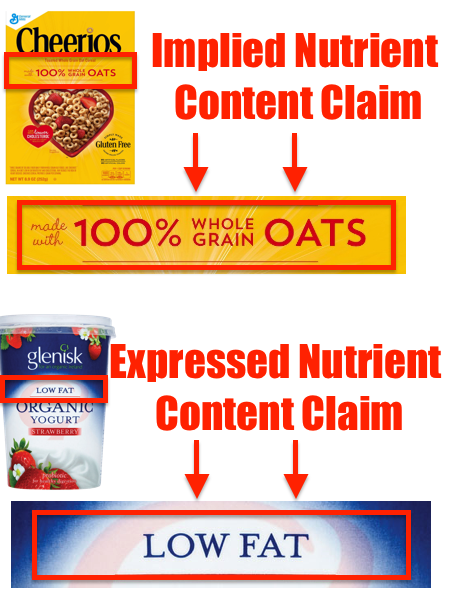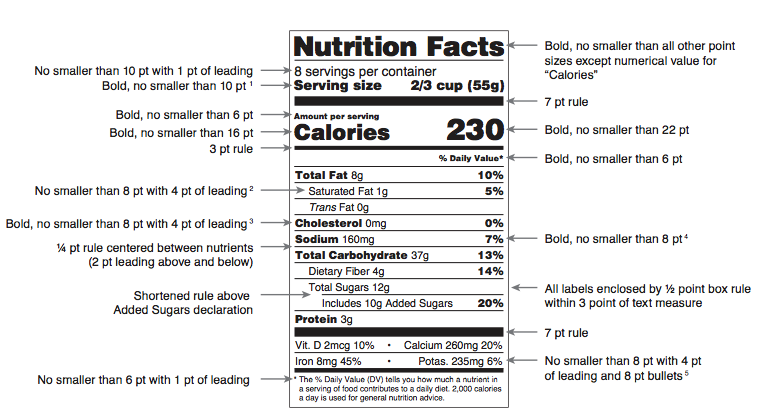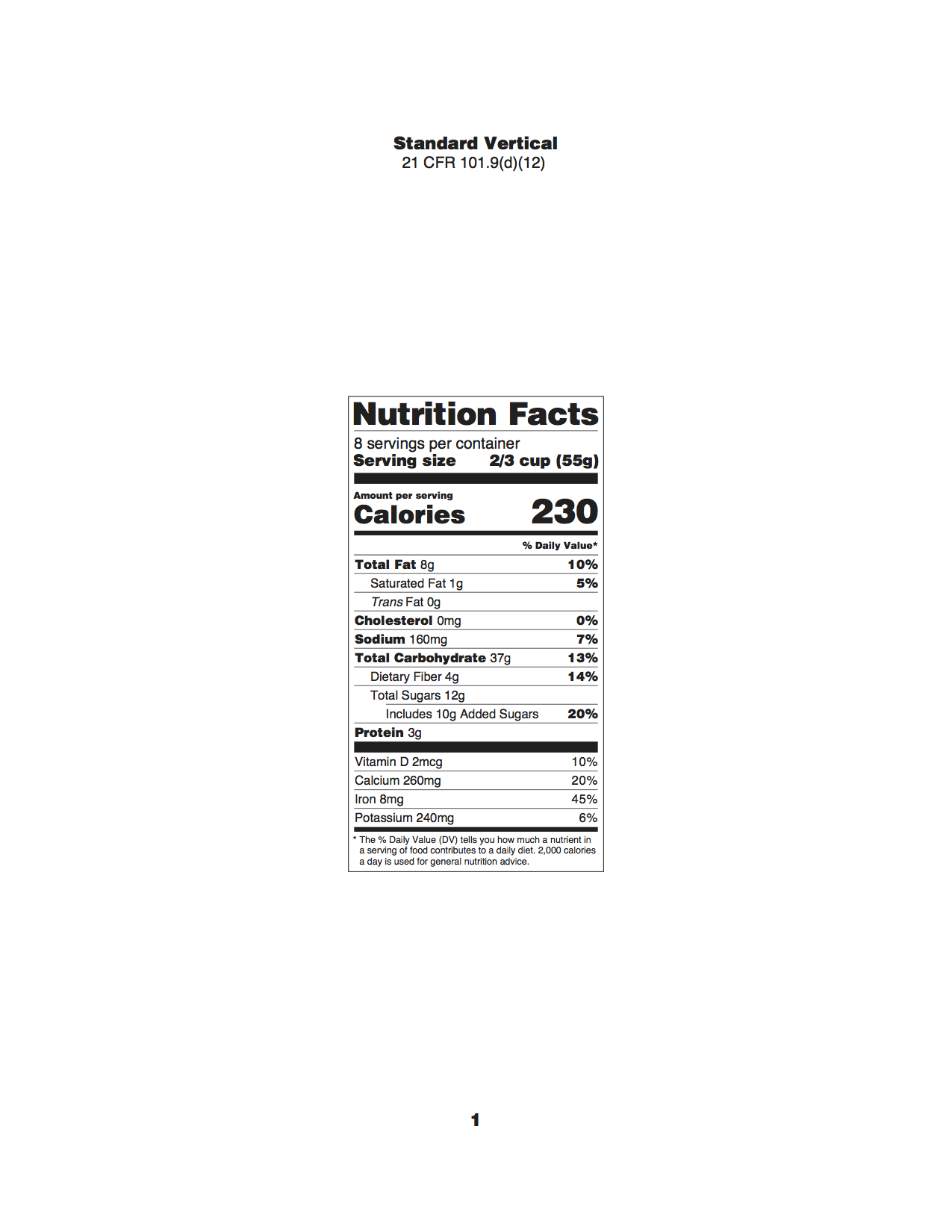Specific Nutrient Content Claim Requirements
Calorie Content Claims (i.e. "Calorie-free" "low calorie")
You may make nutrient content claims about the calorie contents of food.
"Calorie Free" Claims
For terms such as "calorie free", no calories" "zero calories",
The foods must contain less than 5 calories per typical serving amount.
If the food naturally meets this condition without any special processing, then this must be described. For example "cider vinegar, a calorie-free-food"
"Low Calorie" Claims
For the terms "low calorie" "few calories" or "low source of calories",
The food must have a serving size of >30grams and has fewer than 40 calories per serving. The reasoning here is that you can't make the portion size very small and then claim the product has "low calories per serving".
If the food naturally meets this condition without any special processing, then this must be described. For example "celery, a low-calorie-food"
"Reduced Calorie" Claims
For the terms "reduced calorie" or "fewer calories" or "lower calories",
Sugar Content Claims
Use of the terms "sugar free" "no sugar" "zero sugar" is allowed if:
The product contains less than 0.5g of sugar per serving
The product contains no ingredient that is a sugar or contains sugars, unless this is explained in the ingredients section
It either is labeled as "low calorie"/"reduced calorie" or "not a reduced calorie food"/"not for weight control". The rationale here is that consumers expect sugar-free foods to be low calorie, so this must be specified.
"No Added Sugar" Claims
"No Added Sugar" claims are allowed if:
No sugars have been added in processing or production.
No ingredients contains added sugars (such as jam or fruit juice)
The food it resembles and which it is substituting as a "no added sugar alternative" typically contains added sugars.
The product bears a statement that the food is not "low calorie" or calorie reduced" unless the product meets that requirements. Again, the rationale here is that consumers expect added-sugar-free foods to be low calorie, so this must be clarified if it is not true.
"Reduced Sugar" "Lower Sugar" Claims
Fiber Content Claims
If you make a fiber claim, then you must also disclose the level of fat in a serving, unless the product meets the definition of a low fat food (see below)
See Subpart A -- 101.54 (d) for more details
Specific Wording Requirements
"Low" or "Free" Claims:
See Subpart A 101.13 (e)
"High" or "Rich in" Claims:
You may use these terms if the food contains 20% or more of the Daily-Recommended-Value (DRV) in the amount that is typically consumed.
If the product is a "meal product" containing multiple foods, then you must identify which food is the subject of this claim (i.e. the serving of cauliflower in this product is high in vitamin C)
See Subpart A -- 101.54 (b) for more details
"Good Source" or "Contains"or "Provides" Claims
You may use the terms "good source" "contains" or "provides" if the food contains 10-19% of the Daily-Recommended-Value (DRV) in the amount that is typically consumed.
If the product is a "meal product" containing multiple foods, then you must identify which food is the subject of this claim (i.e. the serving of yams in this product is a 'good source' of fiber)
See Subpart A -- 101.54 (c) for more details
"More" or "Added" or "Extra" Claims
Relative Claims that contain the words "more", "fortified", "enriched", "added", "extra", and "plus" may be used to describe the following:
The product of the claim must have >10% more of the recommended intake than the referenced product in the claim. All other requirements for relative claims apply (see above).
See Subpart A -- 101.54 (e)
"High Potency" Claims
When Used to Describe Vitamins & Minerals:This claim may be used to describe vitamins and minerals where the product contains 100% or more of the recommended daily intake for that vitamin or mineral.
For example "Contains botanical X with high-potency vitamin C")
When Used to Describe a Product: "High Potency" claims may be used to describe a product if it contains 100% or more of the daily intake for 2/3 of the vitamins and minerals listed in the RDI which are present at 2% or more in the product.
See Subpart A -- 101.54 (f)
"Light" or "Lite" Claims
These claims may be made if one of the following criteria are met:
The food gets 50% or more of its calories from fat and its fat content is reduced by 50% or more as compared to a similarly reference food (see relative claims).
OR
The food derives less than 50% of its calories from fat and the number of calories is reduced by 1/3 when compared to a reference food (see relative claims).
OR
The food's fat content is reduced by 50% or more when compared to a referenced food (see relative claims).
See Subpart A -- 101.56
"Antioxidant" Claims
You may make a claim about the antioxidant nutrients present in a food insofar as:
A recommended daily intake (RDI) has been established for each of the nutrients that are the basis for the claim.
The nutrients subject to the claim have recognized, scientific antioxidant activity.
The level of each nutrient in the claim must be high enough to qualify for either a "more" "good source of" or "high" claim.
The specific nutrients which are the basis for the antioxidant claim must be referenced where the claim is made and again where that specific nutrient is listed.
See Subpart A -- 101.54 (g)






























































